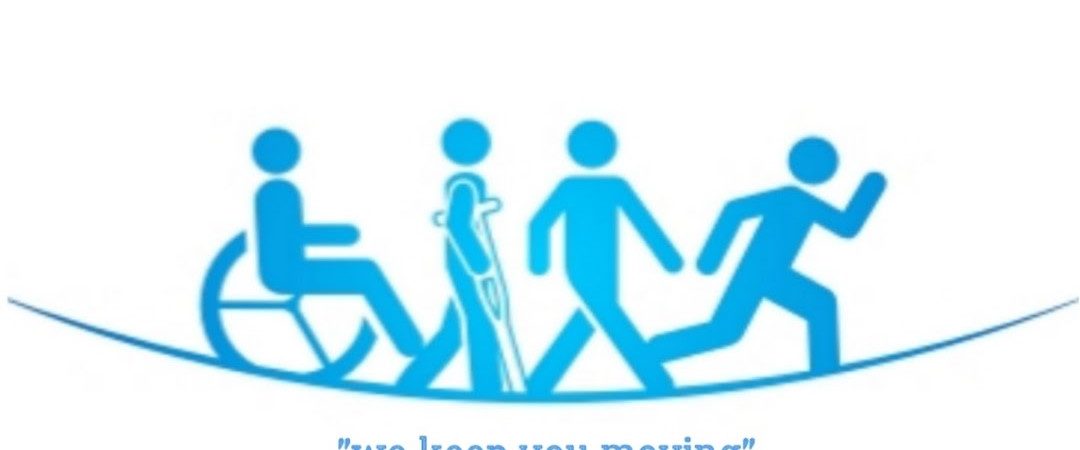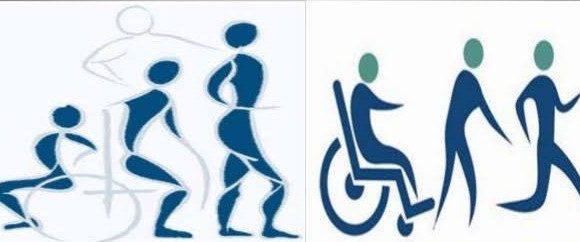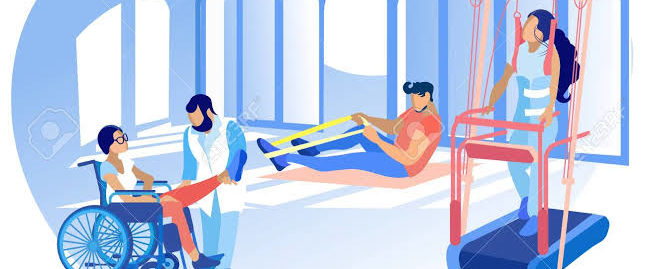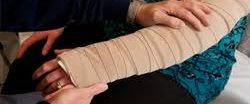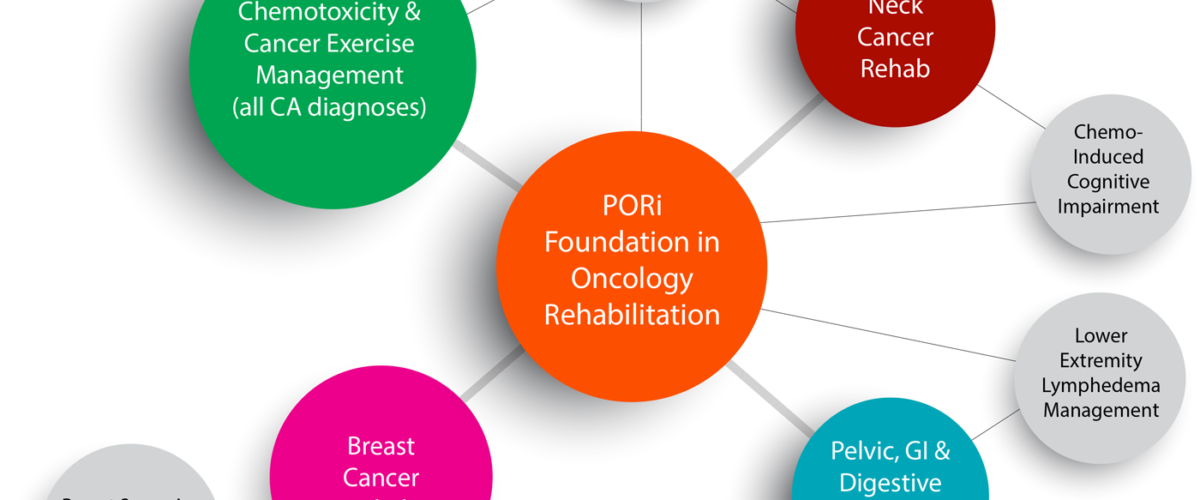EFFECT OF BMI ON MUSCULOSKELETAL PAIN AMONG TEACHERS OF ABUROAD – Dr.Arvind Kumar(PT)1 , Darshana Patel2
EFFECT OF BMI ON MUSCULOSKELETAL PAIN AMONG TEACHERS OF ABUROAD
1Dr.Arvind Kumar (PT), 2Darshana Patel 1Professor & Principal, 2Student 1Ph.D. Scholar, M.PT. (Orthopaedics), M.B.A. (Hospital Management), Dean, Venus Institute of Physiotherapy, Swarrnim Startup & Innovation University, Gandhinagar, Gujarat, India.Emaildrarvindmpt@gmail.com, Mob.-9784631151
ABSTRACT- OBJECTIVE:
The objective of the study was to assess the effect of BMI on Musculoskeletal pain among teachers & its prevalence. METHODS: All Data were collected by a questionnaire. A questionnaire was distributed to all subjects, total 150 (75 males & 75 females), each subjects were passed to complete the selfadministered questionnaire if they fulfil inclusion criteria. A standardized Nordic Musculoskeletal Questionnaire (NMQ general section) was used to collect data on Musculoskeletal symptoms (ache, pain, discomfort) from different regions of the body during last 12 months & the earlier seven days, as well as pain affecting work ability during the past 12 month.This was used as an assessment tool for Musculoskeletal pain in different body region. Also, reliability: 0.61 (Cronbach’s, Alpha validity 0.71) Numerical Pain Rating Scale(NPRS) was used for the perception of pain intensity, which ranges 0-10 is applied,where 0 means no pain & 10 means ‘the worst’’ unbearable pain. Numerical Pain rating Scale was widely used because it is easily administered & requires little to no training or equipment. RESULTS: A total 150 teachers (50% male & 50% female) selected in the study.The study showed significant relationship between the BMI & Musculoskeletal pain in mainly low back pain & knee joint, while other region like Neck, shoulder, Elbow, wrist, Upper back, hip & thigh & Ankle & feet did not show significant relationship with score. Since the readings are in nominal scale, to find the relation,chi-square test is used. Any statistical test is said as significant if p-value is <0.05.The most reported musculoskeletal pain level showed prevalent of low back severe pain among teachers, followed by knee pain. CONCLUSION: This Study has shown that the most of the teachers were suffering from musculoskeletal pain & significant risk factors, & correlations were observed between BMI & Musculoskeletal pain symptoms in teachers. Key Words: Work related musculoskeletal pain, Low back pain, WMSDs, BMI, Teachers. ________________________________________________________________
INTRODUCTION-
In many Countries the prevention of work-related musculoskeletal disorders has been considered as a national priority (1) Several studies have been conducted on the prevalence of MSDs among teachers in many developed & developing countries of the world. These studies have identified teachers as one of the occupational groups that are at the risk of developing MSDs. (2) Musculoskeletal disorder has a high impact for the individual as well as for society, the origin of MSDs is complex & Multi factorial. (3) Musculoskeletal disorders defined by the health & safety executive (HSE),The term musculoskeletal disorders (MSDs) includes any injury, damage or disorder of the joints or other tissues in the upper/lower limbs or the back.Uncomfortable working position, working too long without breaks and working in awkward posture. (4) Musculoskeletal pain is defined as pain perceived related to musculoskeletal, when there is risk of tissue damage or when such damage has occurred, pain can signal that there is a need for recovery of tissues.(5) Individual factors like age, sex, anthropocentric dimensions, muscle strength, physical fitness, mobility, psychological & social factors contribute to musculoskeletal disorders. (6) Several studies have linked obesity with musculoskeletal disorders & repetitive work. (7) The epidemic of obesity has become pandemic defined as an epidemic occurring over a wide geographic area & affecting an exceptionally high proportion of populations. The risk in obesity rates was first noted in the United States, but has speed to other industrialized nation & it is even now being documented in developing countries, Indeed the global extent of obesity pandemic was formally recognized by the WHO in 1997, & worldwide obesity rates are increasing dramatically.(8) Overweight & obesity are one of the world most challenging public health problems (WHO 2003). The prevalence of overweight has reached epidemic proportions in most western countries including Portugal. Overweight & obesity are high among employed adults & have shown a consistent increase over the past few decades. (7) Obesity is defined as a physiological condition in which excess body fat has accumulated to an extent that can negatively affect health(8). Obesity occurs when energy intake exceed the energy expenditure. Humans expend energy through daily life, we can measure obesity by body mass index(BMI). (9) Body mass index (BMI) is a ratio derived from the weight(Kg.) and height of a person(metres). The BMI is defined as the body mass divided by the square of the body height, and is expressed in units of kg/m2, resulting from mass in kilograms and height in metres, introduced as a Quetelet Index in 1830’s several decades to estimate population trends in fat. (8) A BMI value in the range of <18.5 kg/m2 is defined as underweight, 18.5 – 24.9 kg/m2 is defined as normal, 25 – 29.9 kg/m2 is overweight, 30-34.9 kg/m2 is obese class 1, 35 – 39.9 kg/m2 is obese class 2, & 40 > 49 kg/m2 is obese class 3/or morbidly obese..(8) High BMI is the independent risk factor for MSDs, for symptoms of neck shoulder upper & lower limbs, evidence was also found that high BMI is an independent risk factors for development of MSD’s symptoms.(3)
Compared to normal weight patients, underweight patients & obese class two & three patients had higher odds of reporting moderate to severe pain. (11) According to public health prospective effective well documented initiatives for reducing weight improving physical capacity & reducing Musculoskeletal pain among health care workers are therefore needed.(7) Some occupational factors have been associated with the development of work related musculoskeletal pain among many groups & these postures have great burden on their health & quality of life. Work-related musculoskeletal pain is the most common cause of chronic pain in general population, with estimated high lifetime prevalence of MSDs. (2) Teachers have been identified as one of the occupational group that are at the risk of developing work related Musculoskeletal pain (WRMSP), this may due to the fact that teaching is one of most stressful jobs (2)& teaching profession is accompanied by occupational burden that arise from the specific physiological demand of profession.(12) College professors are exposed the numerous pressure sources which affect their quality of life & teaching activities. (13) Among these populations, college teachers who are having administrative activities, conciliating teaching research & extension are exposed to numerous pressure sources beyond those arising from changes in labour system, such as high work load, short pause for rest, intensive working place & requirements for beyond those arising from changes on labour & attraction. (13) When, such situations are associated to a high level of stress, quality of life of this category is considerable inspired including several health disorders such as Musculoskeletal problem which are prevalent among teachers.(13) Prolonged exposures to unfavourable working conditions during teaching become a health risk factors. Despite this the impact of muscular pain specifically has not been given sufficient attention in the literature. (14) Not with standing studies discussing musculoskeletal disorder in this population are still scare in the literature. The incidence of work related Musculoskeletal disorders (WRMSDs) is increasing in recent years, due to organizational changes & work related requirement often leading to medical leaves & workers functional incapacity, so measuring WRMSDs reports is needed to collect data to quantify prevalence & to evaluate different affected populations. Among tools to evaluate such symptoms, the Nordic Musculoskeletal questionnaire is a tool developed to standardize musculoskeletal pain & discomfort thus helping studies populations. There is much anecdotal evidence amongst education professionals about the aches & pains they experience at work & also from health care professionals (e.g. Physiotherapist, osteopaths, chiropractors) who treat them, (4) & it is worth stressing that these are few scientific studies related to Musculoskeletal risk factors among teachers & this deficit is even more severe with regard to college teachers since studies focus on teachers of other educational levels.
So, college teachers deserve attention on the potential health risk & problem related to their labour activity. (13)
AIM OF STUDY
To assess the effect of BMI on Musculoskeletal pain among teachers & its prevalence.
METHODOLOGY
Study design: Descriptive observational study Study Setting: Abu Road Population: Teachers of various school & colleges (Government & private) in Abu road. Sample size: 170 subjects were being selected for this Study but 20 subjects were excluded from the study. Sampling Techniques : Convenient sampling techniques. Source of data collection: Teachers working in academic setup, Abu road (Rajasthan). Method of data collection : Through the data available; contacts to the teachers working in academic field in Abu road & explain them about the study & procedure & those subject were willing to participate and meet inclusion & exclusion criteria. Then their written consent was being taken & collect their data.
Inclusion criteria: Teachers age group of 25 – 40 years. Both sex & gender are included. Minimum 2 years of job experience. Minimum 6 – 8 working hours /day, with minimum 3 lectures per day were accepted in this study. Exclusion criteria: Teachers on leave. Part time teachers Chronic anomalies Any major surgery & other condition Any current fracture Tools 1. Standardized Nordic Musculoskeletal questionnaire 2. Numerical pain rating scale Material used for this study 1. Weight machine 2. Height measurement tape 3. Data collection form 4. Calculator
PROCEDURE This Study was conducted at the Aburoad. Prior to the Study written consent was taken from all subjects & also explained about procedure & aim of the Study. Then subject was taken & collected the data, which covered (1). Personal details (including Age, weight, height, job tenure, education, health, medical background) (2). Musculoskeletal problem in different body regions a). Measurement of BMI- Height was measured in standing position without shoes, using a wall mounted height tape. Weight was measured when the subject was in light clothes, without shoes & empty pockets & then BMI was calculated as weight (kg)/height2 (m) b). Musculoskeletal problem Assessment
All Data were collected by a questionnaire.
Questionnaire were distributed to all subjects total 150 (75male & 75 female), each subjects was passed to completed the self-administered questionnaire if they fulfil inclusion criteria. Standardized Nordic questionnaire (NMQ general section) were used to collect data on Musculoskeletal symptoms (ache, pain, discomfort) from different regions of the body during last 12 month & the previous 7 days, as well as pain affecting work ability during the past 12 month. This was used as an assessment tool for musculoskeletal pain in different body region. Also reliability: 0.61(Cronbach’s, Alpha validity 0.71) . After that for the perception of pain intensity through the Numerical pain rating scale scored for 0-10 applied where 0 means no pain & 10 means worst unbearable pain & assessed it. Numerical Pain rating Scale was widely use because it is easily administered & requires little to no training or equipment.
RESULTS:-
Crosstab
Count
LOWERBACK Total
4+ 4++ 0 1+ 4+++
BMI
Normal 20 18 32 1 3 74
Obese 1 1 3 0 1 6
Overweight 16 7 36 0 11 70
Total 37 26 71 1 15 150
Table 1:- Shows association between BMI and lower back, where p≤0.05.
Chi-Square Tests
Value P-VALUE RESULT
Pearson Chi-Square 11.390a .052 P>0.05 NOT SIG
Table 2:- Therefore, we conclude that there is a significant association between BMI and lower back Pain.
Crosstab
Count
KNEE Total
4+ 4++ 0 4+++
BMI
Normal 19 3 49 3 74
Obese 1 1 4 0 6
Overweight 27 2 38 3 70
Total 47 6 91 6 150
Table 3:- The above table shows association between BMI and knee (p ≤0.05)
Chi-Square Tests
Value P-VALUE RESULT
Pearson Chi-Square 6.110a .071 P>0.05 NOT SIG
Table 4:-. Therefore from table 3 & 4, we conclude that there is a significant association between BMI and
knee Pain.
DISCUSSION
This study analyzed correlation between prevalence of musculoskeletal pain & BMI. The high prevalence of Musculoskeletal disorders among school teachers was well documented (Erick & smith 2011, Durmus & llano 2012, Darkish & Al-unfair 2013, Abdulmonem et la 2014). (15) (16) This study shows a high prevalence of musculoskeletal pain particularly low back pain & knee pain. According to this review the main risk supporting their causal relationship with low back & knee WMSDs were increase BMI. Similar finding were also reported on a systematic review conducted by the NRC/IOM. (17) There, was however a paucity of literature MSDs amongst South African school teachers (kormas et al, 2011) this to determine the prevalence & association between BMI & Musculoskeletal symptoms. (4) A recent study was founded that the causes of LBP to be associated with standing for a prolonged time, specific sitting habits a sudden change in posture & carrying heavy objects (Abolfotouch et al ,2015). This correlates with the current study in which highly significant relationships were founded between standing for a prolonged period of time & low back pain. (P = 0.05). Standing for prolonged time was the second most common aggravating factors for low back pain & several epidemiological studies showed that the significant association among uncomfortable back support & LBP, & Mengestu & Zeke found the same result with low back pain. Prevalence of 57.5% & Abdulmonem A, Hunam A, Elaf A, Hammer T, Jehan A, also found the same result the prevalence of LBP 66.9% & more over study of Abdulmonem et al, also further confirmed these findings in teachers & concluded that Low back pain had the highest prevalence of all the Musculoskeletal regions in school teachers. (18) Several study literatures showed that prolonged sitting may lead to acute low back pain (Anderson 1999) due to the compressive load on the spine & changed with in the passive structures. (Sheehan et all.2016). The predominance if Musculoskeletal pain & discomfort symptoms in lumbar spine of teachers was also found by carvalho & Alexander,who evaluated 2006, elementary school professors & have found a prevalence of 63.1% of Musculoskeletal symptoms in lumbar region. (19) (13) After the low back pain, knee pain is the next most frequent site of musculoskeletal pain found in this study & same result found the previous similar study. Several justifications presented in the literature for this high percentage among them, poor postures adopted during work, performing repetitive activities and lack of fitness (20) (13).Several study founded very high prevalence of Musculoskeletal pain among school teachers which is affecting their work by missing out working days & Eventually affecting the education system as a whole. (16)
The ministry of health points that preventing WRMSDs should be based on strategies improving worker’s health in their workplaces, altering them about ergonomic & environmental risks including physiotherapeutic assistance to evaluate guide & if necessary treat possible disorders. (13)
CONCLUSION
This Study has shown that the most of teachers were suffering from musculoskeletal pain & significant risk factors, & correlations were observed between BMI & Musculoskeletal pain symptoms in teachers. Based on the outcomes of this study the following conclusions are made: There is a high prevalence BMI & low back pain & knee pain among teachers in Abu road. This is needed to supply evidence for a global intervention for teachers, focus on preventing injuries linked to ergonomic strategies directed to movements, postures & the whole overload required during work, thus decreasing the prevalence of WRMSDs, improving teachers’s quality of life & productivity. Health is essential to efficiency of the highest attainable level in almost any line of work. It is peculiarity important for teachers, not only because of strenuous demand & energies but also because teacher’s health is the corner stone of any effective school/college health program.
CONFLICT OF INTEREST:-None
SOURCE OF FUNDING:-Self
REFERENCES 1. Malikraj.sa Senthil Kumar.T b Ganguly.A.K (2011) “Ergonomic intervention on
musculoskeletal problems Welders” International Journal of Advanced Engineering
Technology, IJAET/Vol.II/ Issue III/33-35 2. AC Odole, CA Gbiri, OT Sobiyi, B Oketola . (2013) “Prevalence, Pattern and Correlates
of Work Related Musculoskeletal Pain among Selected school Teachers in Ibadan
Nigeria.” 3. L1, Verhagen EA, Oude Hengel KM, Koppes LL, van der Beek AJ, Bongers PM (2013)
BMC Musculoskeletal Disorder; 14:238. Doi: 10.1186/1471-2474-14-238.
The relation between body mass index and musculoskeletal symptoms in the working population.
Related
4. Lorna Taylor (2011) Work related Musculoskeletal disorders in UK early years &
primary teaching professionals. 5. Ebtesam Mo’awad El-Sayed Ebied (2015) “Musculoskeletal Pain among Primary
School Teachers: A Recommended Health Promotion Intervention for Prevention and
Management”. World Journal of Nursing Sciences 1 (3): 54-61. 6. P Parimalam K Balakamakshi (2016) Musculoskeletal Problems Of Women Bamboo
Workers In Madurai, India. 7. Isabel Moreira-Silva, Rute Santos, Sandra Abreu and Jorge Mota (2013) “Associations
Between Body Mass Index and Musculoskeletal Pain and Related Symptoms in
Different Body Regions Among Workers.Sage Journals 3(2) 1
6,DOI:10.1177/2158244013491952. 8. Md. Salah Uddin, Muhammad Millat Hossain, Md. Shofiqul Islam,Md. Obaidul Haque,
Umma Kulsum, Ehsanur Rahman, Mohammad Habibur Rahman, Md. Fazlul Karim
Patwary(2015) “Prevalence of obesity among musculoskeletal patients” International
Journal of Physiotherapy and Researc, Vol 3(1):889-93. ISSN 2321-1822,DOI:
10.16965. 9. James A. Levine, Lorraine M. Lanningham-Foster, Shelly K. McCrady, Alisa C. Krizan,
Leslie R. Olson, Paul H. Kane, Michael D. Jensen, Matthew M.
Clark(2005).Interindividual Variation in Posture Allocation: Possible Role in Human
Obesity.Science,307(5709)584-586 10. Ashril Yusof, P. Ku, Wan Wan Abas, Noor Azuan, Noor Azuan Abu
O(2012).Biomechanical evaluation of the relationship between postural control Body
mass index.Journal of biomechanics 45,1638-1642 11. Diana M. Higgins()The Relationship between body mass index and diagnosis in
Veterans.Pain Psychology, Critical Care, and Pain Medicine Service/Research Service
Boston Healthcare System Professor, Dept. of Psychiatry, Boston University School of
Medicine. 12. Marjeta Kovac, Bojan Leskosek, Vedran Hadzic and Gregor Jurak(2013).Occupational
health problems among Slovenian physical education teachers. Kinesiology 45(2013)
1:92-100 13. José Pereira de Lima Júnior, Tarcísio Fulgêncio Alves da Silva(2014).Analysis of
musculoskeletal disorders symptoms in professors of the University of Pernambuco –
Petrolina Campus. Rev Dor. São Paulo,15(4):276-80 14. Ebtesam Mo’awad El-Sayed Ebied(2015).Work- Related Musculoskeletal Pain among
Primary School Teachers: A Recommended Health Promotion Intervention for
Prevention and Management. World Journal of Nursing Sciences 1 (3): 54-61.
15. Erick PN, Smith DR(2011).A systematic review of musculoskeletal disorders among
school teachers. BMC Musculoskelet Disord.12:260. doi: 10.1186/1471-2474-12-260. 16. Alsiddiky Abdulmonem, Algethami Hanan,Ahmed Elaf, Tokhtah Haneen and
Aldouhan Jenan(2014).The prevalence of musculoskeletal pain & its associated
factors among female Saudi school teachers. Pak J Med Sci.,30(6): 1191–
1196.doi:10.12669/pjms.306.5778 17. Da Costa BR, Vieira ER(2010).Risk factors for work-related musculoskeletal disorders:
a systematic review of recent longitudinal studies. Am J Ind Med.,53(3):285-323. doi:
10.1002/ajim.20750 18. Rempel DM, Krause N, Goldberg R, Benner D, Hudes M, Goldner GU(2006).A
randomized controlled trial evaluating the effects of two works interventions on
upper body pain & incident musculoskeletal disorders among computer operators.
Occup Environ Med. 63(5):300-6. 19. Carvalho AJFP, Alexandre NMC(2006). Musculoskeletal symptoms in Elementary
School teachers. Rev Bras Fisioter,10(1):35-41. 20. Mozzini CB, Polese JC, Beltrame MR(2008). Prevalence of osteomuscular symptoms in
workers of a metallic packaging company of Passo Fundo – RS. RBPS; 21(2):92-7



